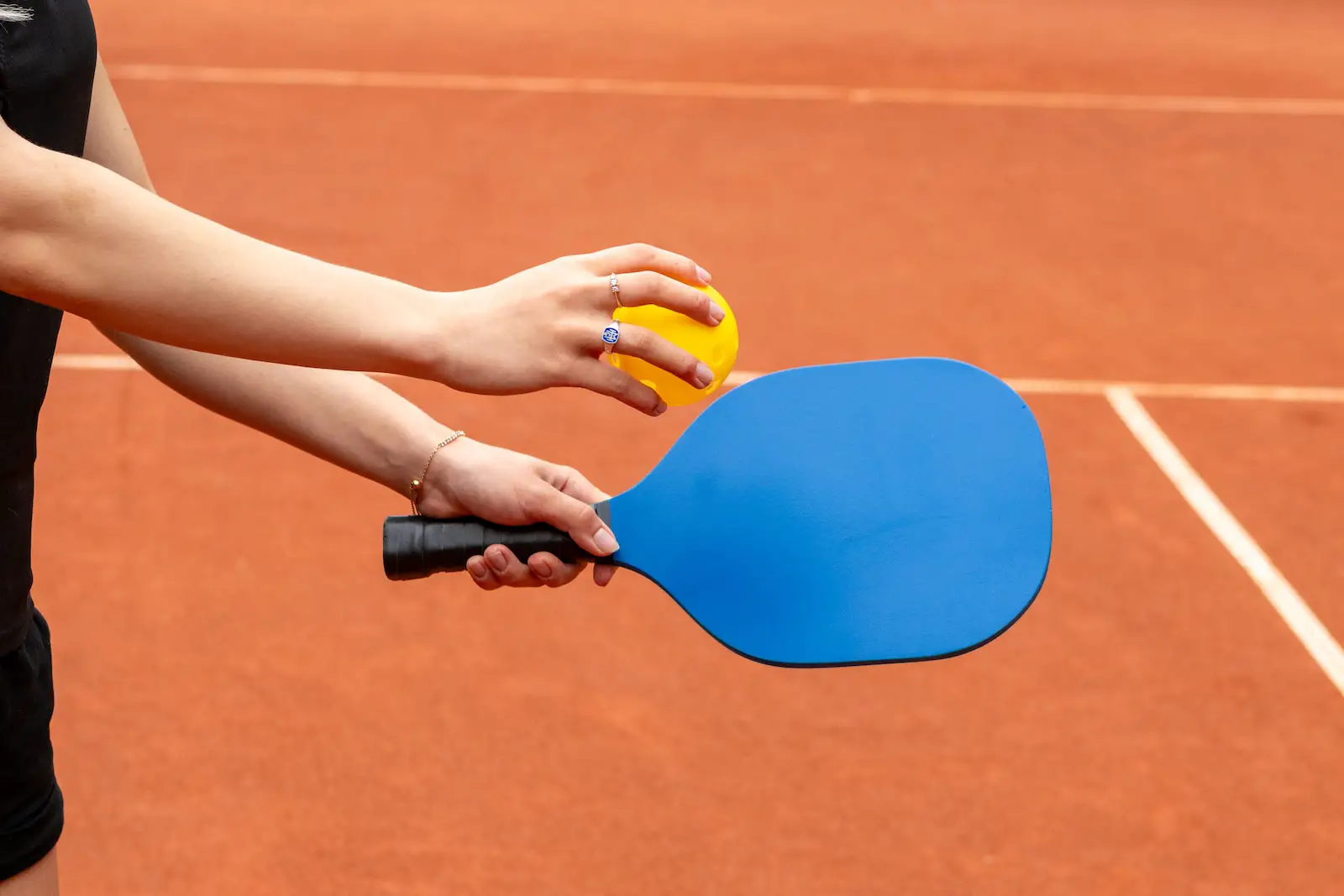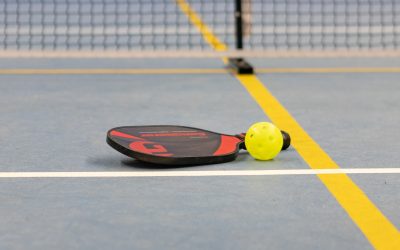If you’re into pickleball, you’ll know how crucial it is to have the right grip size for your paddle. It’s not just about comfort, but also about control and power. Too big or too small, and you could be compromising your game before you’ve even served.
Choosing the right grip size can be a bit of a minefield. There’s a lot to consider, from your hand size to your style of play. But don’t worry, I’m here to help you navigate this pickleball paddle puzzle. Let’s dive in and find out how to pick the perfect paddle grip size for your game.
Why Grip Size Matters in Pickleball Paddles
Grip size in pickleball paddles isn’t just a matter of preference; it impacts every aspect of your game. Let’s talk about why it’s really important to get this right.
Firstly, a well-suited grip size provides the comfort you need when playing. Imagine you’re in the middle of a heated game, your grip is either too small or too big, this will likely affect your comfort level and possibly distract you from your game plan. An correctly sized grip feels natural in your hand, allowing you to focus on your game without any unnecessary discomfort.
Secondly, the control you exert on the ball substantially depends on the grip size. A smaller grip size can give you better wrist action for spins and sharper control. Conversely, a larger grip may provide more stability, but it tends to limit wrist action and therefore reduces control over the ball’s direction.
Lastly, the power of your shots greatly depends on your grip size. A grip that’s too small might not allow enough leverage for powerful shots, while a grip too large may result in loss of paddle control, adversely affecting the shot’s power. It’s about finding that sweet spot where comfort, control, and power intersect for your particular playing style.
Choosing the right grip size might seem challenging, but considering factors such as your hand size and playing style can be great indicators. But, most importantly, it’s about what feels right and works best for you specifically. There’s not a one-size-fits-all solution when it comes to pickleball paddle grip sizes.
Do mind that playing with the wrong grip size can lead to injuries such as tennis elbow or carpal tunnel syndrome. Therefore, getting it right is not only important for your game, but also for your health.
How to Measure Your Hand Size for Pickleball Paddle Grip
Getting the right grip size for your pickleball paddle all starts with measuring your hand properly. It’s simple, but getting it right is crucial. Incorrect measurements can lead to discomfort, reduced control, injuries, or a lack of power in your shots.
To start, you’ll need a ruler or a tape measure. The measurement we’re interested in is from the second line of your palm up to the tip of your ring finger. This gives the ideal grip size for most players.
Here’s the process in more detail:
Step 1: Spread your fingers
Open your hand and fingers wide. This represents the maximum grip you can comfortably hold.
Step 2: Measure Your Hand
Place the end of the ruler at the base of your ring finger (second line of your palm). Measure up to the tip of your ring finger.
Step 3: Note the Measurement
Record the measurement, this is your hand size and it’s crucial to determining your grip size.
I’ve made a markdown table to give you an idea of how your measurement correlates with standard grip sizes:
| Hand Size | Grip Size (Pickleball) |
|---|---|
| Up to 3.5 inches | 4 inches |
| Between 3.5 and 4 inches | 4.25 inches |
| Between 4 and 4.5 inches | 4.5 inches |
| Between 4.5 and 5 inches | 4.75 inches |
| More than 5 inches | 5 inches |
Always remember that everyone is different. While this table provides a good starting point, you should also consider other factors that could influence your choice. For example, those with arthritis may need a larger grip to reduce strain. Those with a more nimble playing style may prefer a smaller grip for more control. It’s all about what feels comfortable, so don’t be afraid to try out a few different options. Playing continuously with the wrong grip size might seem like something trivial that can be overlooked, but trust me it can significantly impact both your game and your health. Don’t take the risk.
Different Grip Sizes and Their Effects on Performance
Different grip sizes significantly influence your performance in a pickleball game. It’s no secret that the size of your paddle grip can make or break your game.
A smaller grip size offers more wrist action and yields better spin and control over shots. It’s ideal for those with a finesse playing style who often rely on strategic placement rather than power. If you have smaller hands or are younger, a smaller grip may feel more comfortable.
Conversely, a larger grip size can lead to more stability and power in your shots. It’s better suited for players who focus more on power play rather than subtle placement or spin shots. However, remember that a larger grip can reduce the range of motion in your wrist and may lead to fatigue or discomfort over time, especially if you have smaller hands.
Below is the table outlining the correlation between grip size and hand size:
| Hand Size | Grip Size |
|---|---|
| 3″ – 3 3/8″ | Extra Small (XS) |
| 3 3/8″ – 3 3/4″ | Small (S) |
| 3 3/4″ – 4 1/4″ | Medium (M) |
| 4 1/4″ – 4 5/8″ | Large (L) |
| 4 5/8″ & Above | Extra Large (XL) |
Remember to consider conditions like arthritis when choosing your grip size. This could impact the size you choose and how comfortable you are when playing.
Bear in mind that performance is not solely defined by the equipment but also by technique. Get the grip right, but also focus on improving your overall playing skills and techniques to truly make a difference in your game.
Choosing the Right Grip Size Based on Your Playing Style
Once we’ve understood how different grip sizes affect performance, it’s time to select the right grip size based on your unique playing style.
If you’re a player who relies on finesse and control, chances are you’re better suited to a smaller grip size. This type of grip will give you more wrist action, improving the precision of your shots. A smaller grip also makes it easier to serve underhand, which is crucial for players who employ a strategic, placement-focused gamestyle.
Those who prefer a power-playing style should look into a larger grip size. With a bigger grip, you’ll have increased stability, which can boost your power shots significantly. Slams, drives and hard serves stand to benefit the most from this setup.
But beyond finesse and power, we also need to consider the different game types: singles and doubles.
In a singles game, having a paddle with a smaller grip might be advantageous. You’ll have more adaptability, which is ideal given the ample court space and one-on-one play.
For doubles games, a larger grip could work to your advantage. Doubles play often requires less finesse and more power, with focus on quick, at-the-net volleys. A larger grip provides the necessary stability for these rapid-fire exchanges.
Here’s a simplified breakdown:
| Game Type | Preferred Grip Size |
|---|---|
| Singles | Smaller Grip |
| Doubles | Larger Grip |
Remember, the right grip size is highly personal and largely depends on your comfort. So don’t be afraid to try different sizes and see what feels best for you!
Testing and Adjusting Your Grip Size for Optimal Performance
Alright, so you’ve determined your initial grip size based on playing style and game-type preference. It’s a good start, but it’s not enough to find that perfect fit. This is where testing and adjustments come into play. Remember, the optimal grip size boils down to individual comfort and performance enhancement.
Let’s dive into how you can test and adjust that grip size for optimal performance.
During a game, be mindful of your hand fatigue and slippage. If you’re consistently tightening your grip to hold the paddle or if you’re losing control too often, it’s a clear sign that your grip size is too small. On the other hand, if you’re experiencing discomfort, hand fatigue, or even wrist pain, your grip might be too big.
Monitoring your performance is another excellent way to evaluate your grip size. Are your shots hitting where they’re meant to? Do you feel in control of the paddle and the ball trajectory? If not, it might be time to consider a switch in grip size. Statistically, a well-fitted grip improves direction control by around 15% and depth control by nearly 20%.
Adjusting your grip size might feel daunting at first but it’s not that hard. You can navigate this process by using grip increasers or reducers. Grip increasers bump up your grip size, and they usually come in forms of overgrips or heat shrink sleeves. If you need to go smaller, grip reducers are your best bet. They’re generally applied directly to the paddle handle.
Here’s a comparison of grip increasers and reducers:
| Grip Increasers | Grip Reducers | |
|---|---|---|
| Uses | Increase grip size | Reduce grip size |
| Forms | Overgrips, sleeves | Applied directly |
When experimenting with different sizes, be patient. Remember, the aim is to maximize comfort and performance, so it’s crucial not to rush this process. Practice as much as you can with different adjustments to find the size that’s just right for you.
There you have it. You’re now armed with an understanding of how to adjust and test your grip size to elevate your pickleball game.
Conclusion
So, we’ve delved deep into the world of pickleball paddles grip size. I’ve shown you how to test and tweak your grip for peak performance. Remember, it’s all about comfort and control. If your hand’s feeling fatigued, or your paddle’s slipping, it might be time for a change. Don’t be afraid to experiment with grip increasers or reducers until you find your perfect fit. It’s a process that requires patience, but the payoff can be a game-changer. Now you’re equipped with the knowledge to make informed decisions about your grip size. Here’s to improved performance and more enjoyable pickleball games!














0 Comments